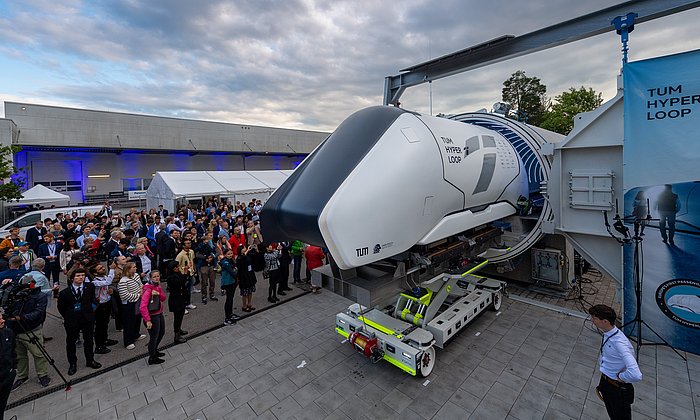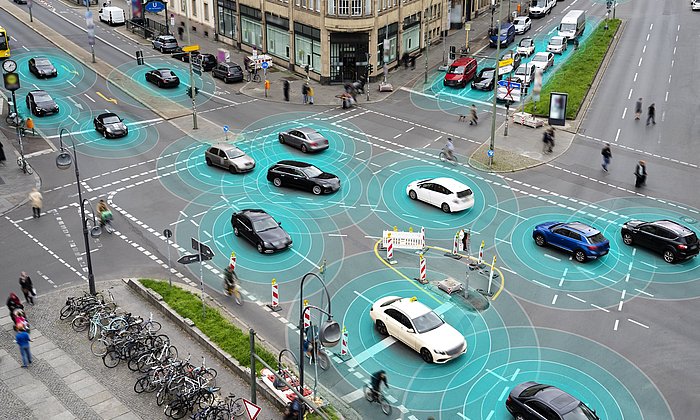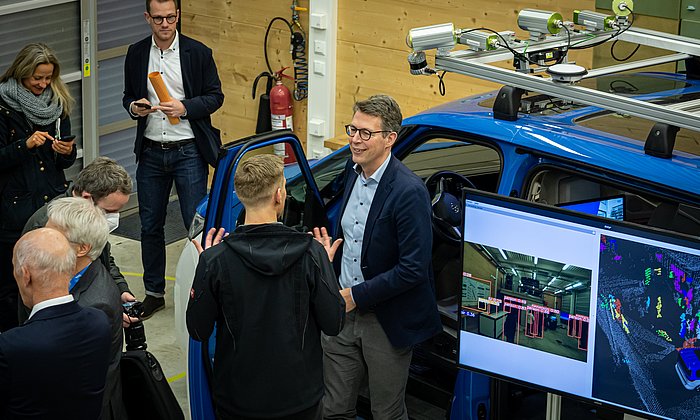Autonomous driving, new mobility concepts and the redistribution of public spaces
TUM to present its new research vehicle at the IAA
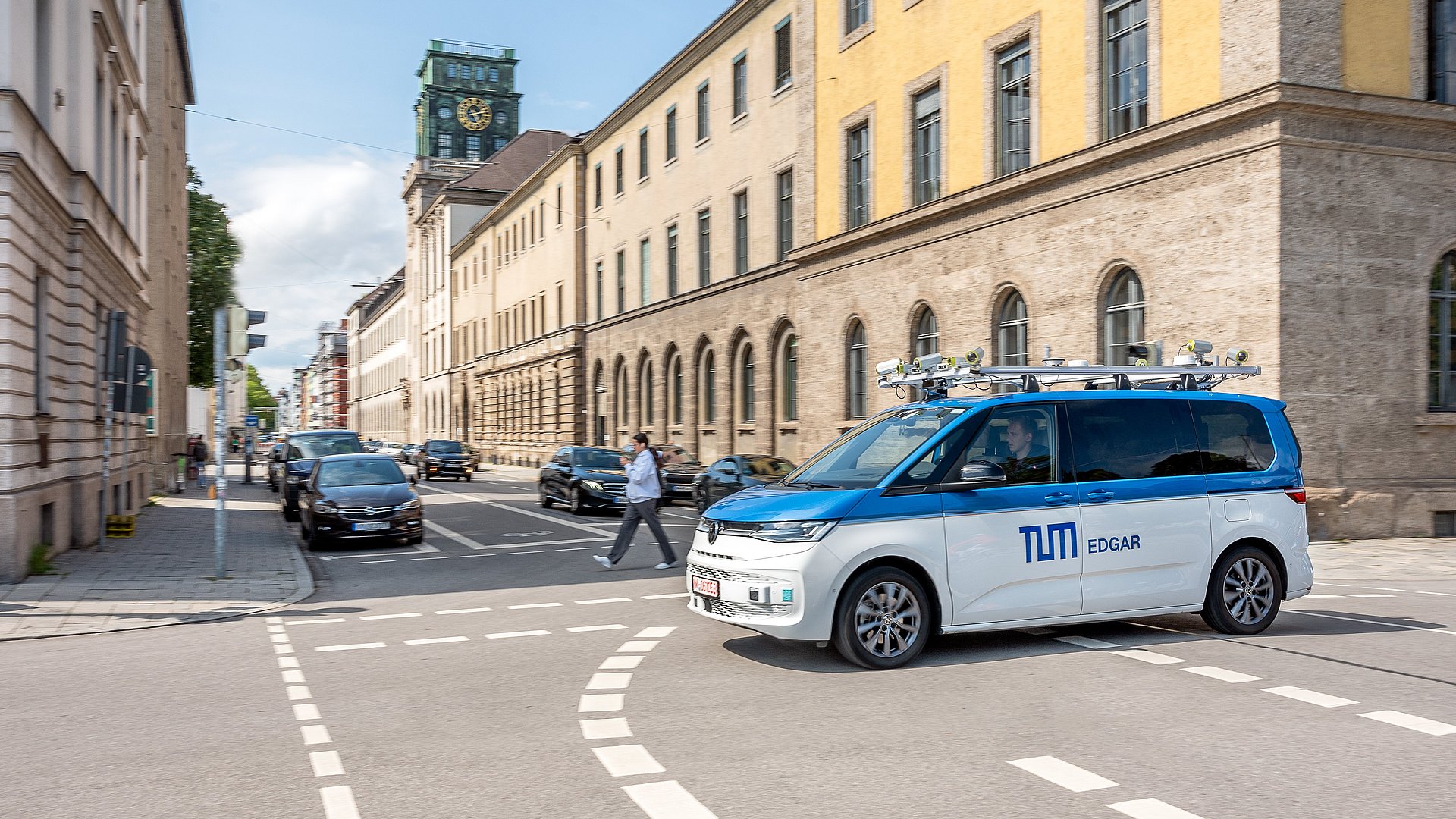
Autonomous driving, innovative urban planning and the repurposing of existing spaces – these are only a few of the topic areas which TUM will present to the public in the course of the international motor show IAA from September 5 to 10. As part of the fair's Open Space segment, the university will present various research projects and approaches to the mobility of the future. The Open Space segment is spread across wide portions of central Munich and is open to the public without an IAA fair ticket.
EDGAR and MCube on Marienplatz
The largest exhibition space for TUM's research will be the Citizen Lab on Marienplatz, where the mobility cluster MCube will present its widely diverse range of activities. A new program each day will give the public a chance not only to learn about a special topic, but also to experience many different projects. At the IAA kick-off on Tuesday September 5 the researchers will for example present the new autonomous research vehicle EDGAR. This experimental vehicle perceives the traffic around it using cameras, LIDAR and radar sensors as well as microphones, among other things. The minibus, which cost approximately 750,000 euros, is a locally emission-free plug-in hybrid and will help bring autonomous driving closer to practical application with test drives in public street traffic. In this context the researchers are working on an algorithm which can be provided on an Open Source basis. The objective: Accelerate the development of autonomous vehicles and turn the technology into reality together with other research institutions and industry.
EDGAR'S technical data in detail
- Sensor array: Includes 10 camera sensors, 4 LIDAR sensors (long and short-range), 6 RADAR sensors as well as GPS, IMU (Inertial Measurement Unit) and microphones.
- Computing power: Central high-performance computer with 16 core AMD CPU, 132GB RAM and Nvidia RTX A6000 (graphic card).
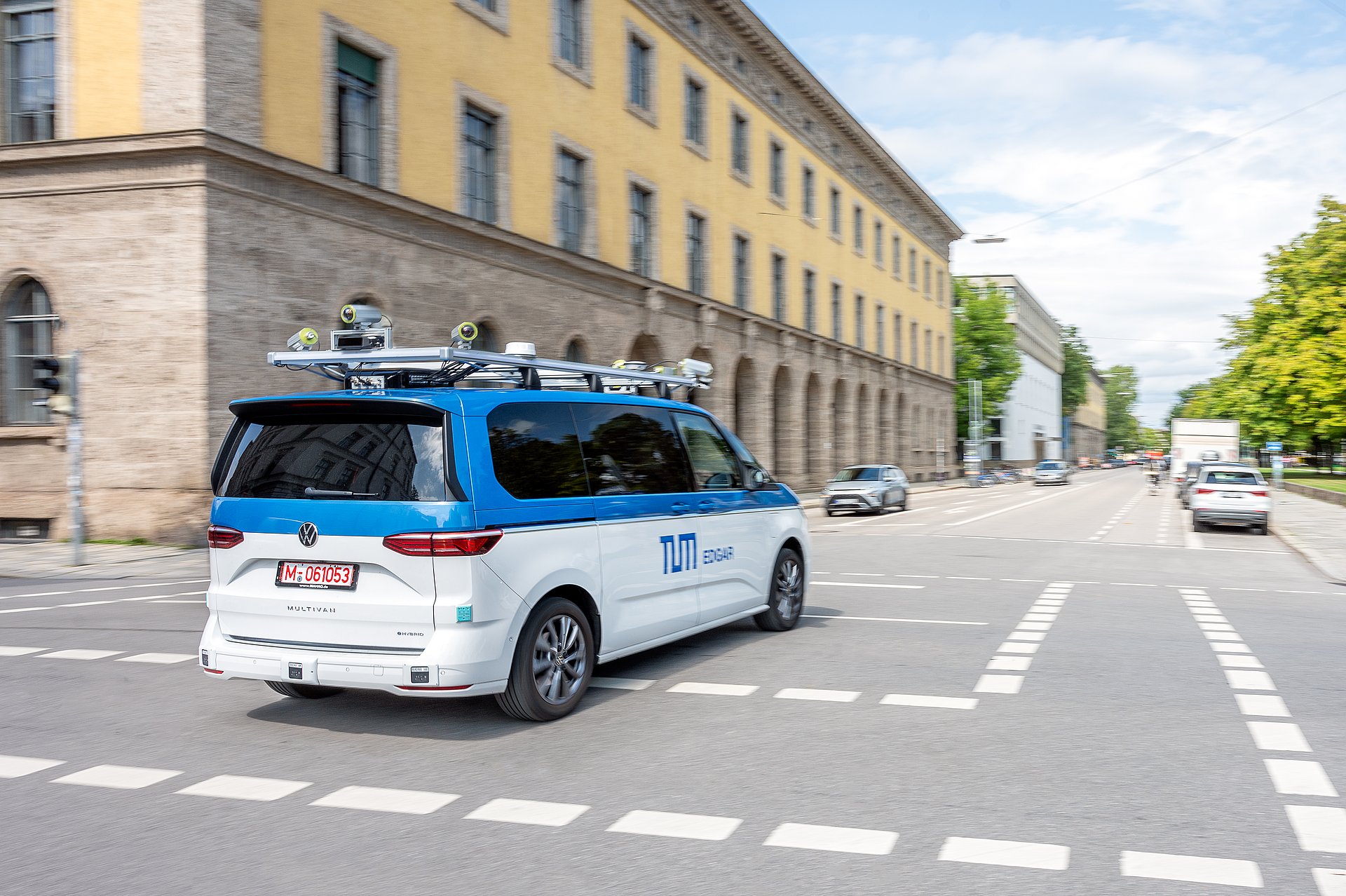
Concepts for public transportation services and TUM Hyperloop at the IAA
In addition to the research vehicle EDGAR, the MCube cluster will also present other projects from its widely varied areas of activity. The list includes measure against climate change, energy transformation topics and thus the electrification of traffic. The digitalization of cities, the future of public transportation and models for an improved quality of life in the city of the future will also be featured at the fair stand. And TUM research will be visible outside of Marienplatz as well: On nearby Königsplatz visitors will have a chance for a close-up look at the TUM Hyperloop passenger pod and will find out more about this alternative to the classical train. In addition to the TUM Hyperloop, TUM will also be present on Königsplatz as part of the TEMPUS research project. TEMPUS is a test field for automated and networked driving in Munich to which TUM contributes its expertise for questions relating to aerial traffic data collection, Ride-Parcel-Pooling (a combination of passenger and logistics traffic) and an automated and networked bicycle rickshaw. The researchers in this project are also working on the simulation and projection of the widest possible range of traffic-related innovations in Munich.
TUM locations and program points in the IAA 2023 Open Space
Marienplatz / Citizen Lab
- Tuesday, September 5: Autonomous driving
- Wednesday, September 6: Climate change and policy
- Thursday, September 7: Energy transformation and electrification
- Friday, September 8: Digitalization
- Saturday, September 9: Future public transportation services
- Sunday, September 10: Quality of life in the city
Königsplatz
- Tuesday through Sunday, TUM Hyperloop
- Tuesday through Sunday, TEMPUS Consortium, including TUM
The MCube stand at the IAA was financed by TUM along with the city of Munich, the Bavarian State Ministry for Housing, Construction and Transport, BMW, Digital Hub Mobility @ UnternehmerTUM, Stadtwerke München (Munich City Utilities, SWM) and MAN.
MCube schedule at IAA: https://www.mcube-cluster.de/event/mcube-ist-dieses-jahr-wieder-auf-der-iaa-vertreten/
Pictures for editorial use: https://mediatum.ub.tum.de/1720201
Technical University of Munich
Corporate Communications Center
- Andreas Huber
- huber.a@tum.de
- presse@tum.de
- Teamwebsite
